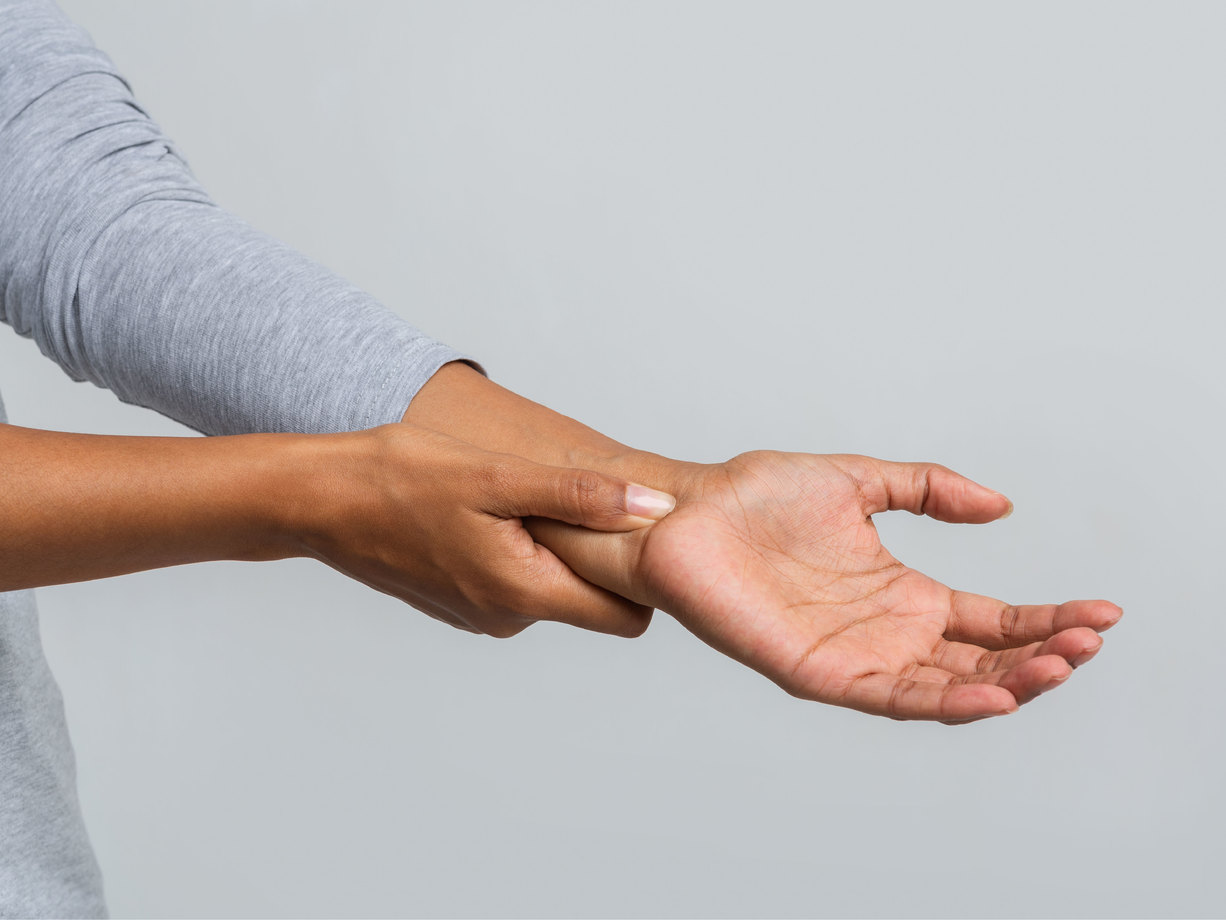Dealing with Wrist Pain
The wrist is one of the most commonly injured parts of the body. We are constantly using our hands and wrists in our jobs, sports, writing, texting, and common chores around the house. Wrist pain is often caused by sprains or fractures from sudden injuries. But wrist pain can also result from long-term problems, such as repetitive stress, arthritis, and carpal tunnel syndrome. Pain in the hand and wrist can significantly interfere with people’s day-to-day lives.
 |
Symptoms of Wrist Pain
Wrist pain symptoms can vary from person to person and depending on the cause. People can have pain that they describe as achy or dull, while others may have pain that is sharp.
Symptoms of an injury, such as a wrist sprain, can include swelling and bruising and commonly occur after some sort of trauma. Numbness, tingling, and weakness extending into the fingers may occur when pain is caused by carpal tunnel syndrome.
Some people may develop the following symptoms:
Stiffness – in the wrist and potentially the fingers.
Trouble gripping objects – grasping or holding on may be difficult or uncomfortable.
A clicking sound when moving the wrist – this can be more severe after periods of rest. Depending on the cause, symptoms may be mild to start and become worse as time goes on.
At first, pain may only occur during certain activities. Then as time goes on and the symptoms worsen, the pain may occur at rest. Numbness can also progress to the point where a person cannot feel cold or heat and may drop things. |
Treatment of wrist pain
Treatment for wrist pain depends on the cause of the pain and its severity. Starting with the least to the most invasive techniques to treat wrist pain are as follows:
- Home treatment – simply resting the wrist allowing it time to heal can be an effective strategy. Pain medication and ice can also help to reduce inflammation and pain.
- Wrist Splints – depending on the case, a wrist splint can help. Splinting may prevent certain wrist movements that cause irritation and inflammation. A splint might also reduce the pinching of the nerve and can help with night pain with carpal tunnel syndrome.
- Exercises/Physical Therapy – depending on the type of pain, wrist exercises may help to reduce pain. Certain exercises can be prescribed to stretch and strengthen muscles and tendons.
- Cortisone/PRP injections – cortisone or PRP injections, can help to decrease inflammation.
- Surgery – this should only be used if less invasive treatments have not helped. The type of surgery performed depends on the cause and condition. Surgery for carpal tunnel syndrome involves cutting a ligament in the wrist to release pressure on the nerve.
Prevention of wrist pain
- Use proper posture when sitting at a workstation, and keep the wrists in a relaxed position. Sometimes a standing desk can help with this.
- Consider a wrist-friendly ergonomic keyboard if long hours are spent at the keyboard.
- Learn how to use hand tools properly, so less stress is placed on the hands and wrists.
- Take regular breaks from repetitive tasks.
- Use wrist guards to prevent injuries when participating in sports where appropriate
- Build good bone strength. Getting adequate amounts of calcium and vitamin D can help prevent fractures. Exercise is also vital for improving bone strength.
- Prevent falls. Falling forward onto an outstretched hand is one of the main causes of wrist injuries. To help prevent falls, wear stable shoes, remove home trip hazards, light up your home to see trip hazards, and install handrails on your stairways, if necessary.
Share
